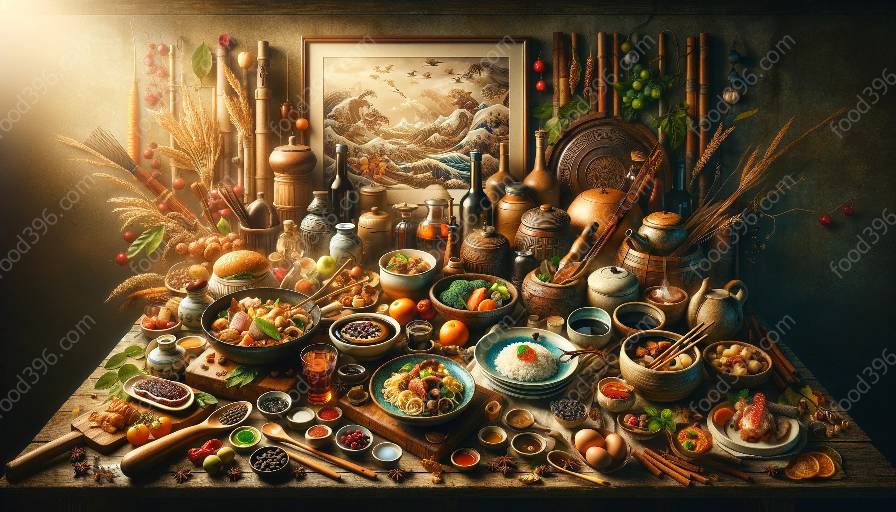Fusion cuisine in the middle ages was a remarkable convergence of flavors, techniques, and culinary traditions that emerged from cross-cultural interactions and exchanges during this time period. The exchange of ingredients, cooking methods, and culinary practices between different cultures resulted in a rich and diverse culinary landscape that laid the foundation for modern global cuisine.
Historical Context
During the middle ages, trade routes and cultural exchanges fostered the movement of people, goods, and ideas across vast regions. This facilitated the intermingling of culinary traditions, leading to the emergence of fusion cuisine. The cross-cultural interactions between the East and the West brought spices, ingredients, and cooking techniques from distant lands, influencing the culinary practices of various regions.
Influences on Middle Ages Cuisine
The fusion of culinary traditions in the middle ages was shaped by a multitude of influences, including the Silk Road, the spice trade, and the medieval Islamic world. The Silk Road, a network of interconnected trade routes, facilitated the exchange of goods, including spices, fruits, and vegetables, between Asia, the Middle East, and Europe. This resulted in the introduction of new and exotic ingredients to the culinary repertoire of the middle ages.
Furthermore, the spice trade played a pivotal role in shaping fusion cuisine during this period. Spices such as cinnamon, cloves, and nutmeg, which were sourced from distant lands, found their way into the kitchens of medieval Europe, adding new dimensions of flavor to traditional dishes.
Additionally, the medieval Islamic world made significant contributions to the development of fusion cuisine in the middle ages. The Islamic world's advanced culinary techniques, sophisticated use of spices, and culinary traditions greatly influenced the culinary landscape of the Mediterranean and beyond. The exchange of culinary knowledge and practices between the Islamic world and Europe led to the fusion of diverse cooking styles and ingredients.
Techniques and Innovations
The fusion cuisine of the middle ages was characterized by innovative cooking techniques and culinary practices that transcended cultural boundaries. The use of spices, herbs, and condiments from different regions, combined with creative cooking methods, resulted in the creation of new and innovative dishes that merged diverse culinary traditions.
One notable example of fusion cuisine during the middle ages is the incorporation of spices and cooking techniques from the East into European culinary practices. This fusion gave rise to dishes that showcased a harmonious blend of flavors and aromas, demonstrating the culinary creativity and adaptability of the time.
Legacy and Impact
The fusion cuisine of the middle ages left a lasting legacy that continues to resonate in modern global cuisine. The cross-cultural exchanges and culinary amalgamation of diverse traditions laid the groundwork for the evolution of international cuisine, shaping the culinary identities of various regions around the world.
Furthermore, the techniques and innovations pioneered during the middle ages continue to influence contemporary culinary practices, inspiring chefs and food enthusiasts to explore and celebrate the diversity of flavors and cooking styles that emerged from fusion cuisine.
Conclusion
The fusion cuisine of the middle ages was a remarkable testament to the power of cultural exchange and culinary creativity. The convergence of flavors, ingredients, and techniques from different cultures during this period laid the foundation for the diverse and vibrant global cuisine we enjoy today.
By embracing the historical influences and innovations of fusion cuisine in the middle ages, we gain a deeper appreciation for the interconnectedness of culinary traditions and the enduring impact of cross-cultural exchanges on the evolution of food and gastronomy.

